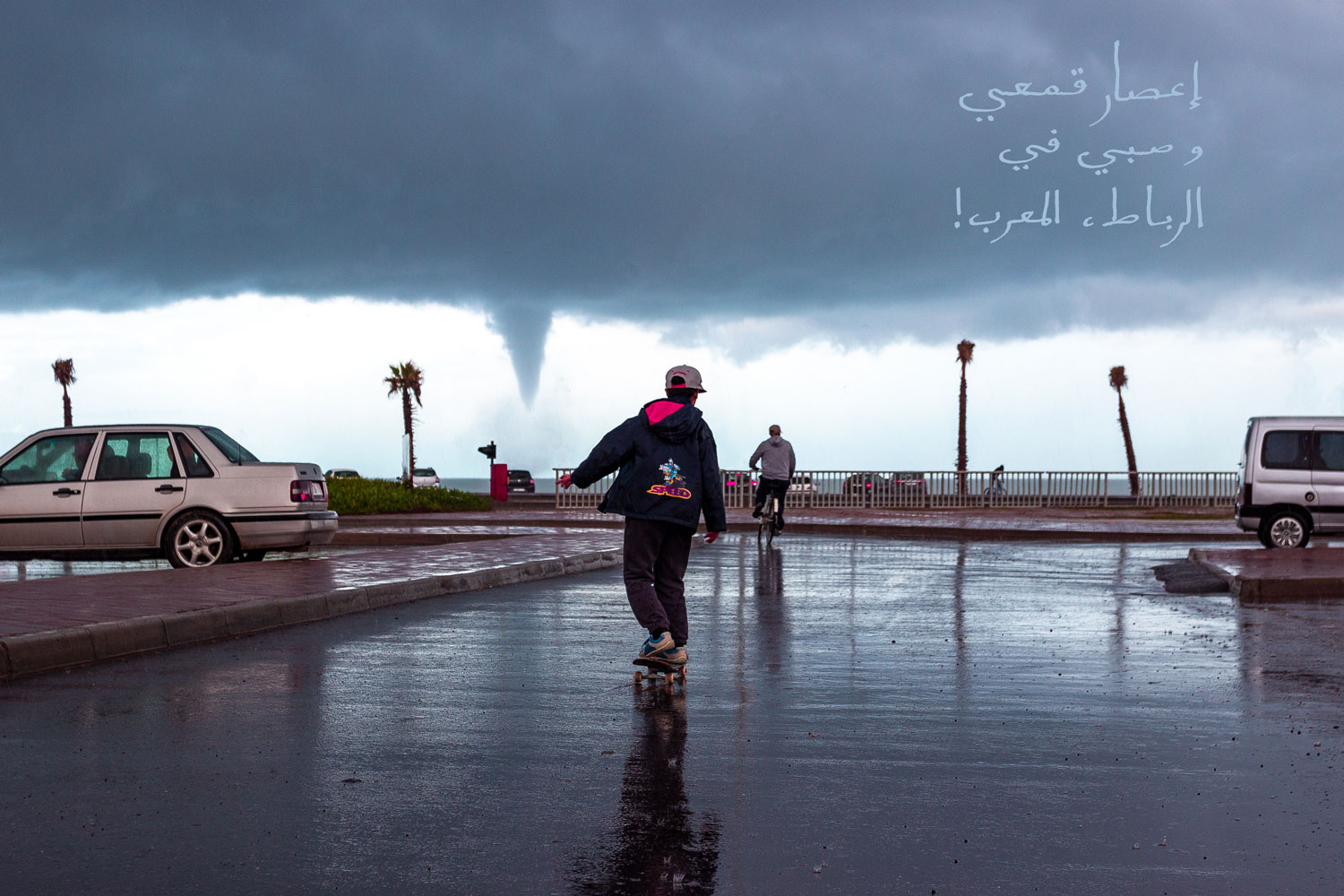Rabat
Rabat is the legal capital of Morocco. The city is home to the residence of the king. Rabat is the most populous city in Morocco and is listed by UNESCO.
All this is just formalities. Rabat is a rather decent city, but not very interesting. It doesn’t make sense to spend more than one day there.
In winter, it is rainy in Morocco. The rains are not constant, the weather changes several times a day. First, it rains, then the sun shines. After a heavy downpour, the roads of Rabat leading to the coast reflect the sky and seem like the end of the world.

At the ocean coast in Rabat stands the fortress of Udaya, founded in the 12th century. The fortress wall of impressive length stretches behind a row of palm trees.

Inside the fortress, there is a city where the walls are painted in blue color.

This is not the blue city that the reader has heard of. In “that” blue city, all the walls are painted entirely in blue, while in Udaya, only a small lower part of the wall is painted.

This part of Rabat has been added to the UNESCO list.

That’s why Udaya is so clean. The residents maintain the cultural status of their homes.

Surprisingly, the blue city of Chefchaouen itself, which will be discussed in another part, is not included in the list of cultural heritage.

It is said that painting a city in blue is not enough. Rabat also has a particularly cool layout.

The old city is seamlessly integrated into the new Rabat with great care and love. There are no new buildings cluttering the horizon, and the old quarters are not overwhelmed with stalls and hawkers. Some street details have been preserved since the 12th century. That’s why it’s UNESCO.

Beyond the fortress, the Atlantic Ocean begins. Breakwaters break the waves crashing onto Rabat.


Across the road from the fortress lies the Medina of Rabat.

There is nothing particularly interesting in it. It’s even more boring than Casablanca. A swarm of straight streets without any embellishments.

The market is located in the Medina, but tourists don’t visit it. That’s why a traveler with a camera is met with requests not to take pictures here. However, there is nothing worth capturing at the market. It’s as unremarkable as writing a story about a flea market.

There is nothing to do in Rabat. The city tries to alleviate boredom with decent street art.

A couple of worthy works are unlikely to fix the situation.

Suddenly, something happens that will forever etch Rabat in my memory. A genuine tornado roams over the ocean.

What is the first reaction of a normal person to a gigantic vortex? To run as fast as possible for shelter. What is the reaction of a photographer? To drop everything and run toward it.
When I reach the coast, the vortex is already weakening. Suddenly, a Moroccan teenager with a skateboard in his hands runs toward the storm. He catches up to his father on a bicycle, drops the skateboard on the asphalt, and rides toward the hurricane.

The storm passes, impressions from the captured shot remain. The wind calms down in Rabat, and rain begins.

Arabic graffiti tries to break through the wet car window.

The roads in Rabat pass directly through the fortress.

The city center of the capital turns out to be the wealthiest in the entire country.

Rabat is even more European than Casablanca. No wonder, the king lives here.


Expensive business centers, banks, offices.

Formally, Rabat is a beautiful city to live in. Well, among Moroccan cities. It has everything: international restaurants, an old fortress, the ocean, a wealthy center, street art, and giant grandmothers.

It’s completely unimaginable that this is Africa.


After a short break, the sky tightens again. I want to see the tornado once more, so we head back to the ocean.

There is no tornado, but there is a storm.

Are you okay with the storm?



